Located in downtown Shanghai on West Nanjing Road, Jing’an Temple is the most famous attraction in Jing’an District. This ancient Buddhist temple, recognized as a national heritage site since 1983, stands in striking contrast to the surrounding modern skyscrapers. The district itself was named after this historic temple, highlighting its cultural importance. A visit here offers both spiritual peace and a glimpse into Shanghai’s rich history.
Jing’an Temple Facts
- Location: No. 1686, Nanjing West Road, Jing’an District, Shanghai
- Type: National Key Buddhist Temple in Han Area
- Area: 22,000 square meters
- Ticket Price: CNY 50. Trip.com discounts
- Opening Hours: 07:30 – 18:00
History of Jing’an Temple
With a history dating back over 780 years, Jing’an Temple is one of Shanghai’s oldest Buddhist temples. It was first built during the Three Kingdoms Period (220-280 AD) under the name “Hudu Chongyuan Temple.” During the Southern Song Dynasty (1127-1279), it was relocated to its current site on West Nanjing Road, where it became a thriving spiritual center.

The temple has undergone several name changes throughout history. In the Tang Dynasty, it was called Yongchan Temple, and later renamed Jing’an Temple during the Song Dynasty – a name that has endured for centuries.
The early 20th century saw the temple integrated into Shanghai’s modernization when it became the starting station for the city’s first tram line in 1908. However, tragedy struck in 1972 when the temple was destroyed by fire. Reconstruction began in 1984, with the Hall of Heavenly Kings and Three-Sage Hall being restored first. After decades of careful restoration work that lasted until 2021, the temple now stands as a magnificent blend of traditional Buddhist architecture and modern urban surroundings, officially reopening to the public in 1990.
Architecture of Jing’an Temple
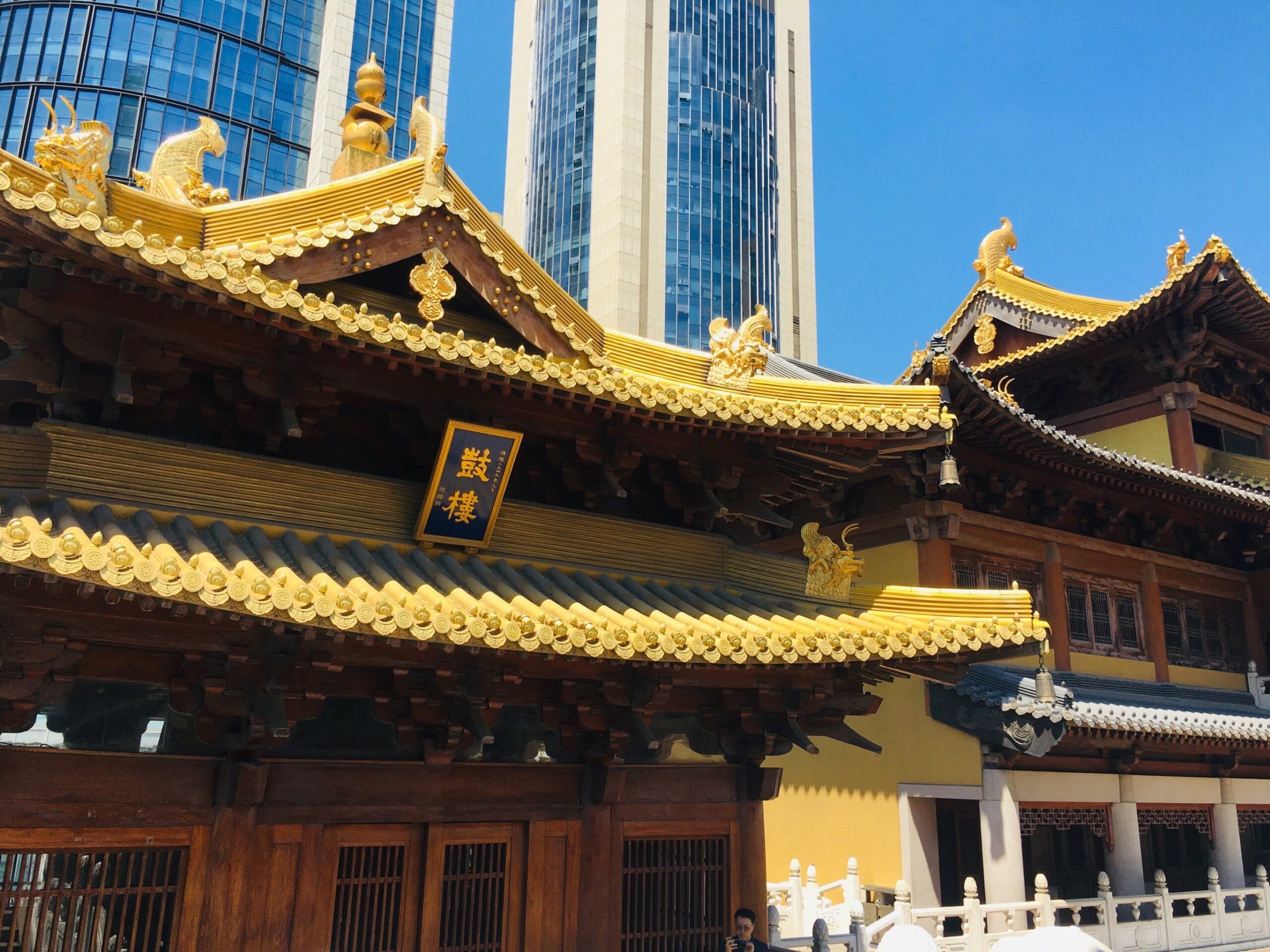
Jing’an Temple follows traditional Chinese temple layout with a front-temple, back-pagoda design. The complex is arranged along a central axis, featuring main halls including the Heavenly King Hall, Grand Hall, and Three Sage Hall. Between these stand bell and drum towers, creating a symmetrical structure typical of classical Buddhist architecture. The design reflects pre-Ming Dynasty styles, particularly in its elaborate bracket sets (dougong) and overhanging eaves.
The buildings showcase distinct Buddhist elements through decorative motifs like elephants, dharma wheels, and lotus flowers. Constructed with high-quality Burmese teak, the temple features glazed yellow and dark gray roof tiles with gilded ornaments. These traditional architectural features, combined with the temple’s modern urban setting, create a unique blend of historical spirituality and contemporary Shanghai.
What to See in Jing’an Temple

The Fan Chuang (Sanskrit Pillar)
The Fan Chuang (Sanskrit Pillar) was built in 2007 and is located on the east side of the main gate. Carved from a single piece of granite, it stands 18 meters tall with a diameter of 2.1 meters and weighs 160 tons. The front side is inscribed with four large Chinese characters “Zhèng Fǎ Jiǔ Zhù” (meaning “May the true Dharma abide forever”), while the back bears the Diamond Sutra calligraphed by Su Shi (a famous Song Dynasty poet and scholar).

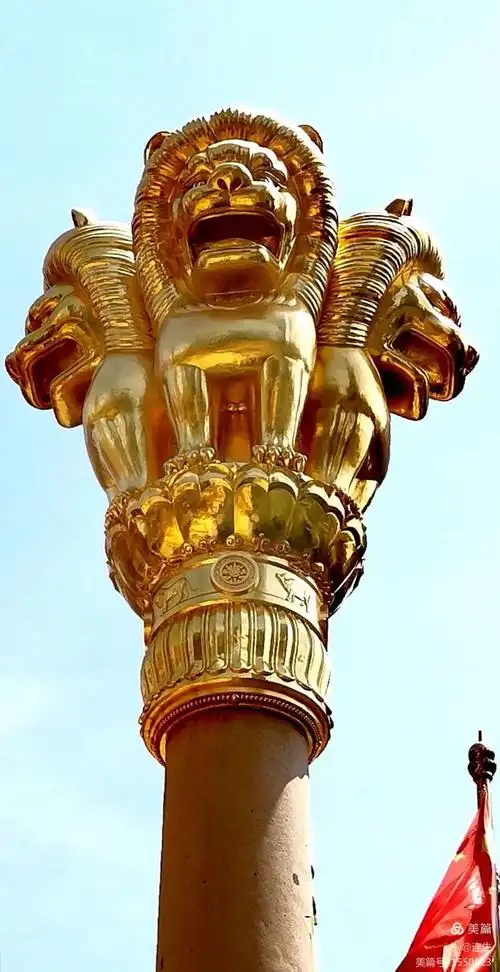
The Temple Gate and Heavenly King Hall
This grand entrance combines the temple gate and Heavenly King Hall in one structure. Built in classic Song Dynasty style, the 12-meter-tall gate features a granite lower level and teak wood upper level with yellow glazed tiles. Its two-tiered design follows traditional Buddhist temple architecture.

Bell Tower
The two-story Bell Tower houses the Temple of Peace Bell, a 3.3-meter-tall bronze bell weighing 7.3 tons with a diameter of 2.1 meters. The ground floor features the famous “Boil Well,” one of Jing’an Temple’s Eight Scenic Spots, historically known as “Sixth Spring under Heaven”. Due to the reconstruction, the spring was relocated at the crossing of Huashan Road and West Nanjing Road.
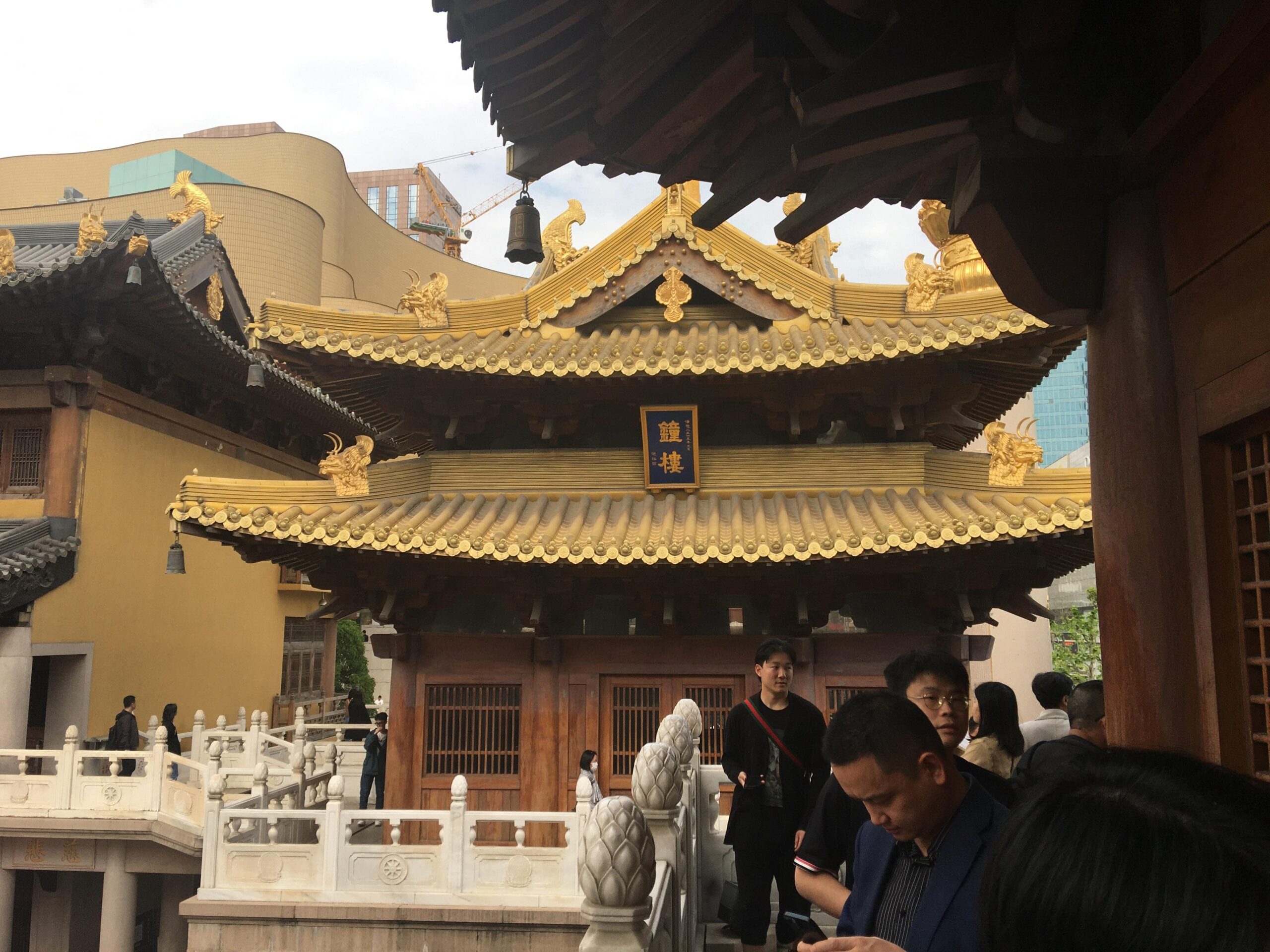
Fu Hui Treasure Cauldron
In the front courtyard stands this elegant white bronze cauldron, standing 10.23 meters tall and weighing 15.5 tons. The antique-style cauldron rests on an evergreen stone base, featuring inscribed calligraphy by Master Hui Ming along its sides.
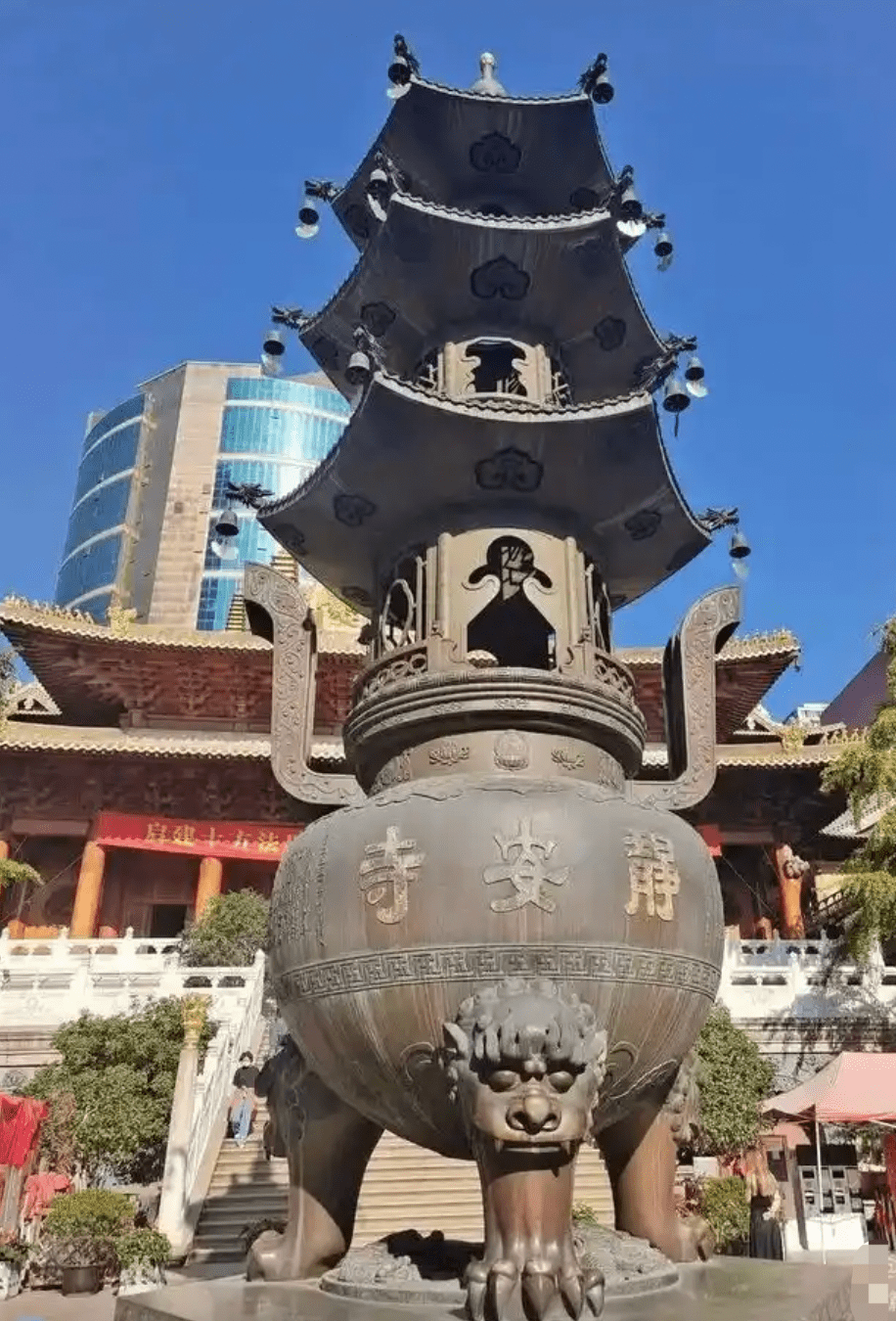
The Mahavira Hall
As the temple’s centerpiece, this grand teak hall features a double-eaved copper roof soaring 26.71 meters – the complex’s second tallest structure after the pagoda. Its impressive interior contains 46 massive teak columns (0.72-0.8m diameter), using over 3,000m³ of timber. The hall houses a magnificent 15-ton pure silver statue of Sakyamuni Buddha.
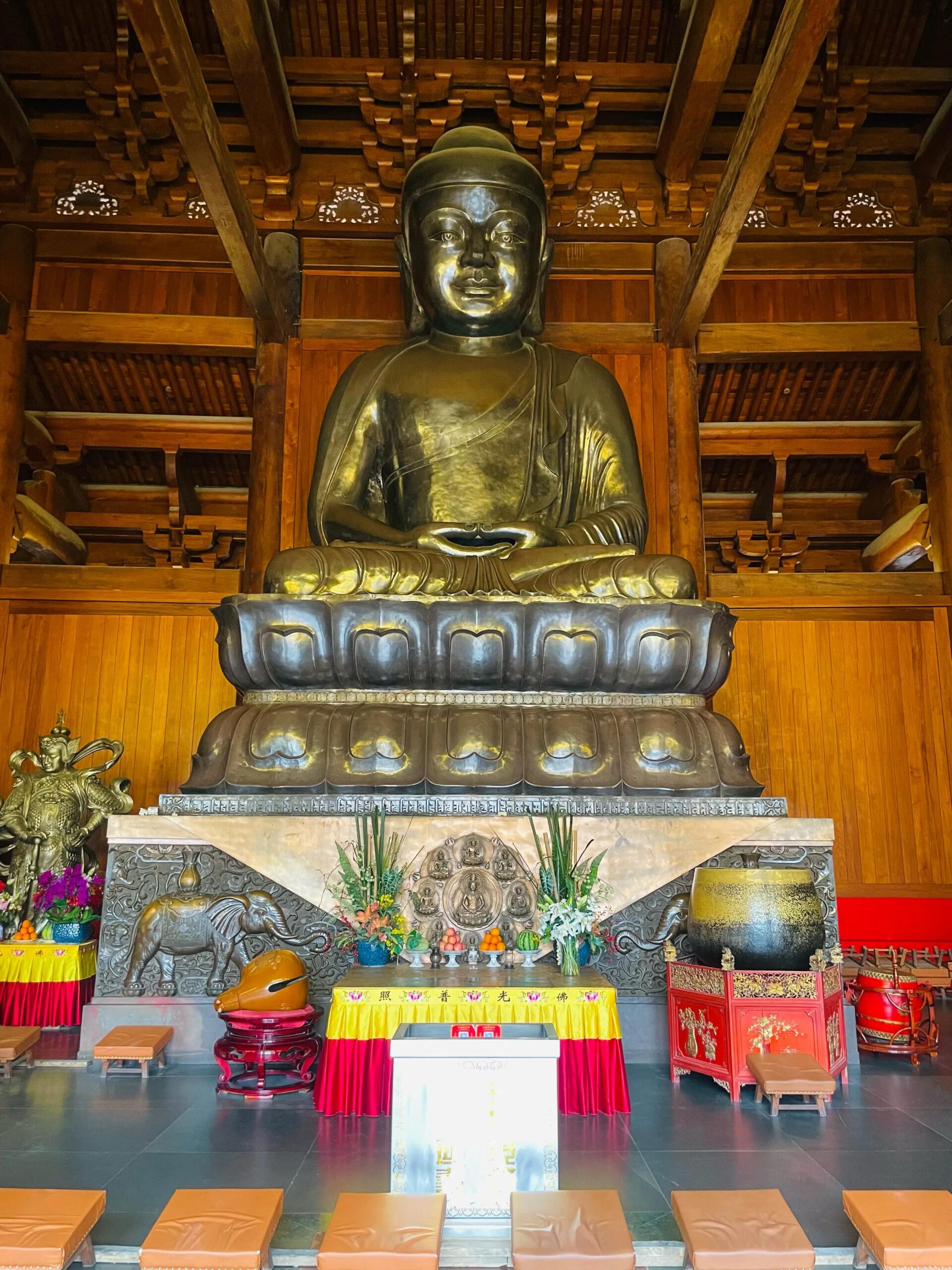

The Main Hall is flanked by two side halls connected through covered walkways. The East Hall houses the Guanyin Pavilion, which contains an impressive 5-ton statue of the Bodhisattva Guanyin, carved from a 1000-year-old camphor tree.
The West Hall features the temple’s most prized religious artifact – China’s largest pure jade portrait of Sakyamuni. This magnificent sculpture weighs an astonishing 11 tons, standing 3.78 meters tall with a width of 2.6 meters. Due to its enormous dimensions, the wall was torn down when it was moved into the hall. The jade Buddha’s serene facial expression and graceful posture radiate profound peace and spiritual dignity.
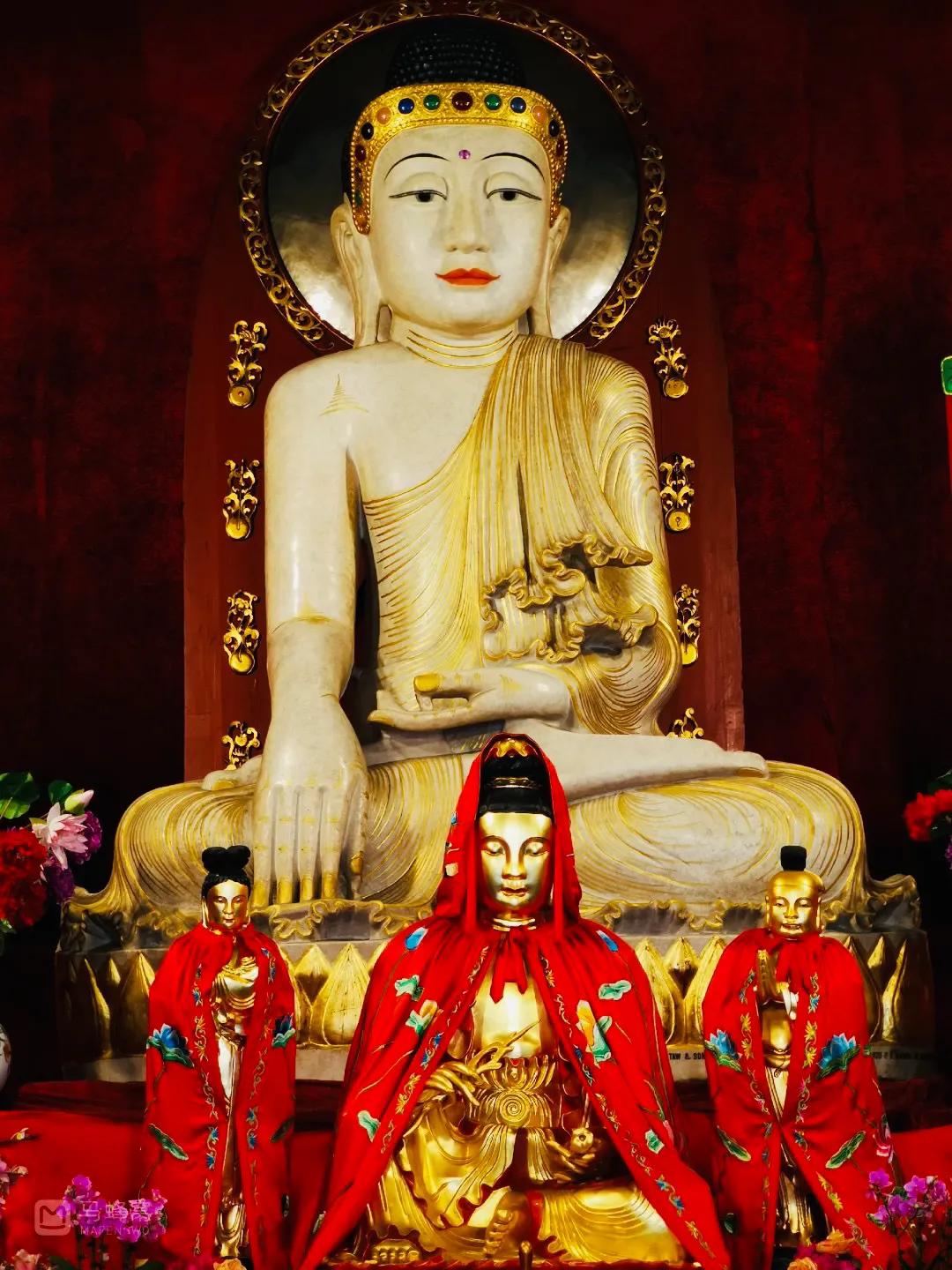
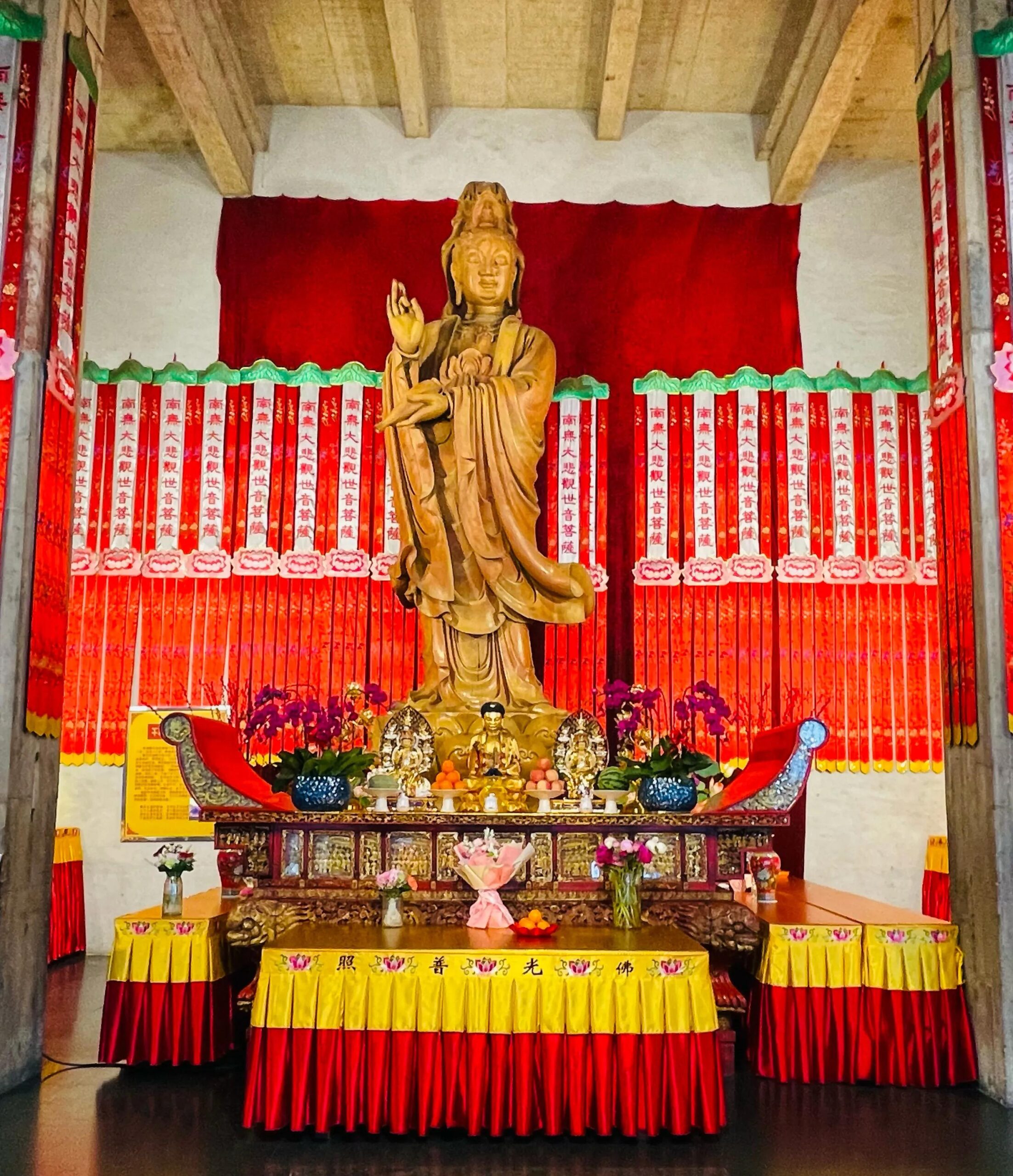
The ThreeSage Hall
Located north of the Main Hall, this seven-story teak structure rises 32.22 meters with its distinctive copper-tiled roof. The hall enshrines the Western Trinity: Amitabha Buddha flanked by Guanyin Bodhisattva and Mahasthamaprapta Bodhisattva.
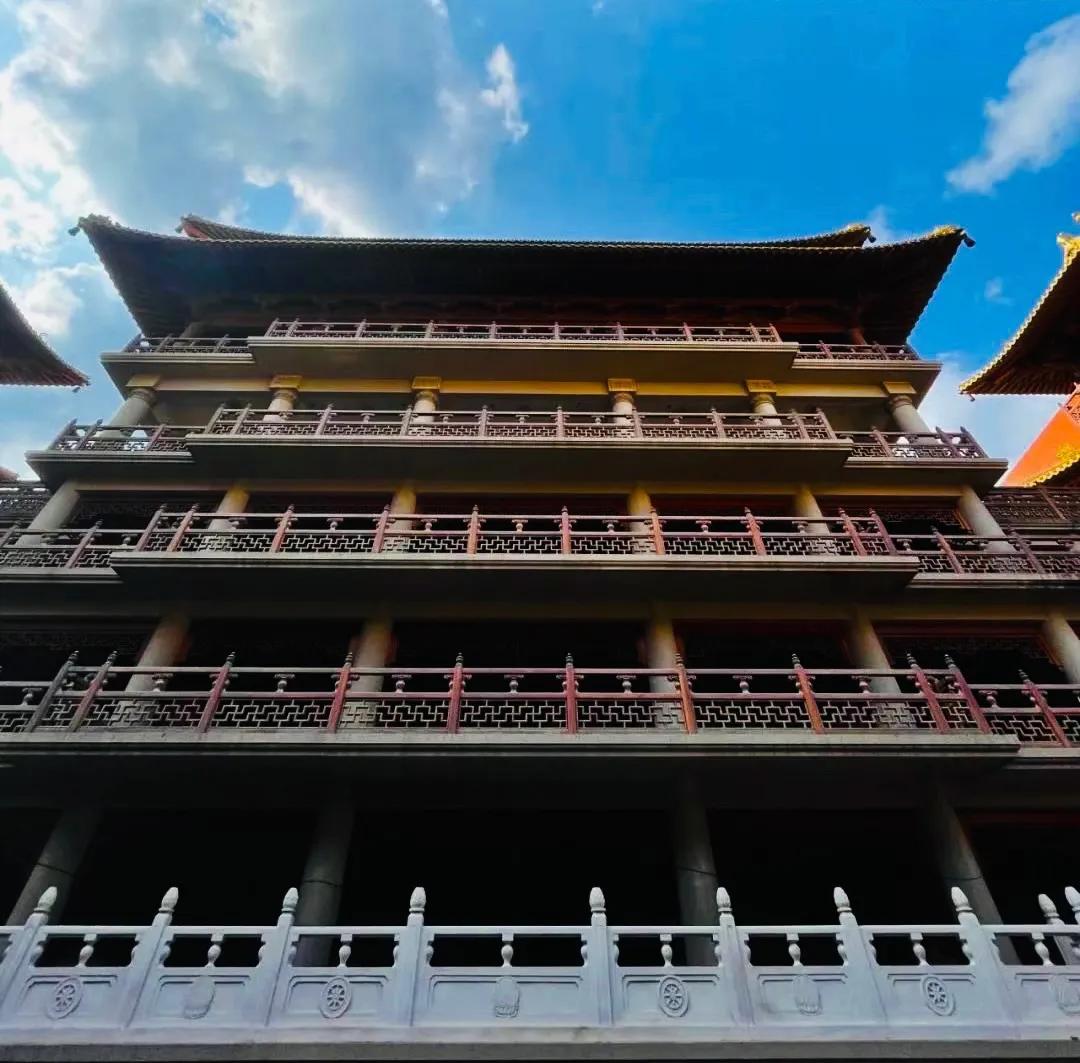
Jing’an Pagoda
This seven-tiered square pagoda stands 33 meters tall, featuring a magnificent gilded bronze spire in the traditional Vajrasana style. The tower’s interior contains a remarkable collection of 868 finely crafted Buddhist statues and rare tantric artifacts. Currently, the pagoda’s interior remains closed to public access for preservation purposes.
At the base of the pagoda hangs the remarkable Ruyi Bell, a 3,000-kilogram bronze treasure cast in 1369 during the Ming Dynasty’s Hongwu era. This rare cultural relic has survived centuries completely intact – a testament to both its exceptional craftsmanship and the temple’s careful preservation.
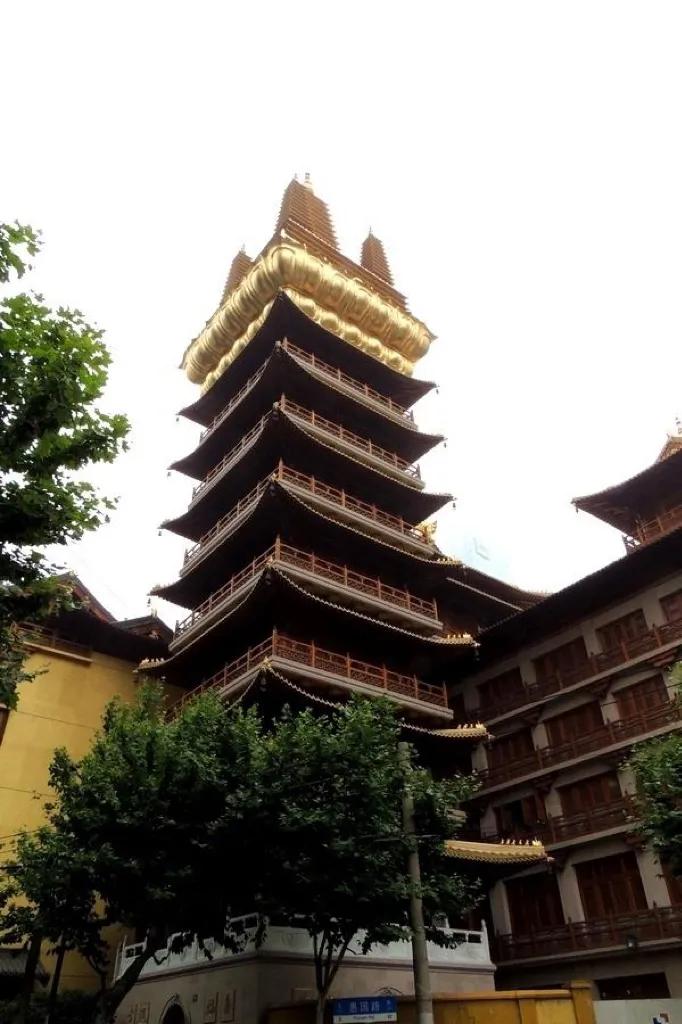

The Annual Jing’an Temple Fair
The annual Jing’an Temple Fair, held every 8th day of the 4th lunar month for Buddha’s Birthday, originated in 1881 during Emperor Guangxu’s reign. This vibrant tradition began when the temple’s reconstruction celebration attracted crowds, gradually evolving into today’s grand event.
During the fair, the plaza fills with stalls selling traditional crafts and local snacks. Visitors enjoy acrobatics, magic shows, and Chinese opera performances. The highlight remains the sacred Buddha Bathing ritual – devotees reverently pour fragrant water over a Sakyamuni statue with small ladles, symbolizing spiritual purification amidst an atmosphere of joyful devotion.
Things to do near Jing’an Temple
After exploring the ancient temple, discover why this area is one of Shanghai’s most vibrant neighborhoods.
- Luxury Shopping Experience: The temple is surrounded by upscale malls like Jiuguang Department Store and Jing’an Kerry Centre, housing international luxury brands and gourmet dining options.
- Local Food Adventures: Head to Wujiang Road food street to sample authentic Shanghainese snacks including shengjianbao (pan-fried buns) and crispy pork cutlets with rice cakes.
- Artistic Strolls: Nearby Yuyuan Road offers a bohemian escape with its charming cafes, independent galleries and unique boutique shops.
How to get to Jing’an Temple Shanghai
By metro
Take Line 2 , Line 7 or Line 14 and get off at Jing’an Temple Station. Leave from Exit 1 to the temple directly.
By Bus
Take bus 15, 20, 40, 113, 315, 321, 330, 824, 830 or 927 and get off at Jing’an Temple Station.
Jing’an Temple Ticket Price & Opening Hours
Book Your Ticket Now| Entrance Fee | CNY50; Ticket price during the Spring Festival are between CNY100 and CNY1000 |
| Opening Hours | 07:30 -18:00 (04:30 to 17:00 during the incense period, which usually refers to the 1st and 15th days of each lunar month) |